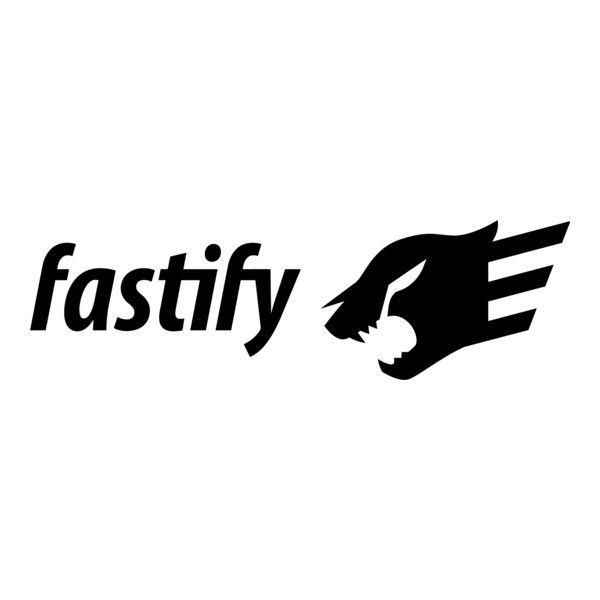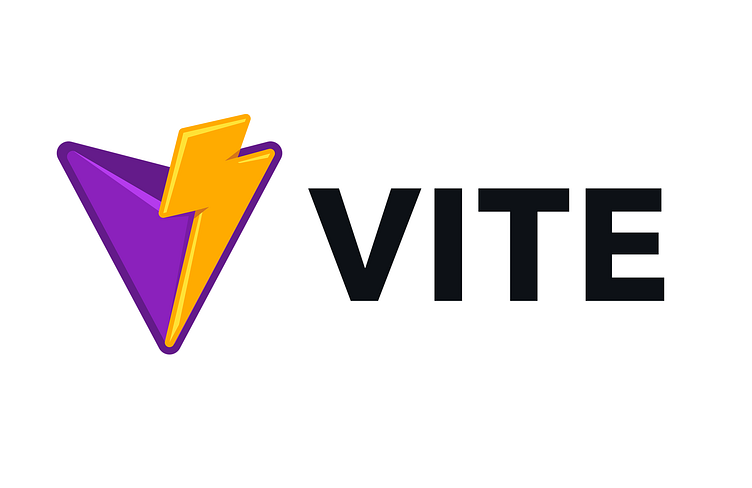In the ever-evolving landscape of web development, the pursuit of performance and an exceptional developer experience remains a constant. While frameworks like Next.js and Nuxt.js have dominated the full-stack conversation, a new architectural pattern is emerging, one that pairs the raw speed of a backend powerhouse with the lightning-fast tooling of a modern frontend build system. This article explores the powerful combination of Fastify and Vite, a duo that promises to redefine our expectations for building high-performance, full-stack JavaScript applications.
Fastify, a web framework for Node.js, is renowned for its low overhead and incredible throughput, making it one of the fastest options available. On the other side, Vite has revolutionized frontend development with its native ES module-based dev server, offering near-instantaneous Hot Module Replacement (HMR) and an optimized build process. By marrying these two technologies, developers can create a seamless, integrated development environment that transitions into a highly optimized production build, offering the best of both worlds. We will delve into the core concepts, practical implementation, advanced features, and best practices of building a full-stack framework on this powerful foundation.
The Core Architecture: Uniting Backend Speed and Frontend Agility
The philosophy behind a Fastify and Vite framework is simple: leverage best-in-class tools for their specific domains and integrate them intelligently. This creates a cohesive system where the backend and frontend work in harmony without sacrificing performance or developer ergonomics. This approach is gaining traction in the latest Node.js News as a compelling alternative to more monolithic frameworks.
Why Fastify for the Backend?
Fastify’s design is centered around speed and efficiency. Unlike older frameworks such as Express.js, it uses a schema-based approach with AJV (Another JSON Schema Validator) to parse and serialize JSON, which significantly boosts performance. Its plugin-based architecture encourages code modularity and reusability, making it easy to extend functionality. For developers following Fastify News and comparing it with Express.js News or Koa News, the performance benchmarks and modern feature set are compelling reasons to make the switch. It provides a robust foundation for handling API requests, server-side rendering, and other backend tasks with minimal overhead.
Why Vite for the Frontend?
Vite has fundamentally changed the frontend development game. Traditional bundlers like Webpack process the entire application before serving it, leading to slow startup times. Vite, however, serves files over native ES modules in the browser, resulting in an almost instantaneous server start and incredibly fast updates. This makes the development feedback loop tight and enjoyable. For production, it uses Rollup for a highly optimized bundle. The latest Vite News often highlights its seamless integration with libraries like React, Vue.js, and Svelte, making it a versatile choice for any frontend stack. This modern approach is a significant leap forward from the days of complex Webpack News configurations.
The Integration Model
The magic happens in how Fastify and Vite are integrated. During development, the Fastify server starts and acts as the main entry point. It handles all API requests directly and forwards any requests for frontend assets (like CSS, JS, or images) to the Vite development server. This proxying creates a unified development experience under a single port.

// A simplified development server entry point
import Fastify from 'fastify';
import { createServer as createViteServer } from 'vite';
import middie from '@fastify/middie';
async function createServer() {
const app = Fastify();
await app.register(middie);
// Create Vite server in middleware mode
const vite = await createViteServer({
server: { middlewareMode: true },
appType: 'custom'
});
// Use Vite's middleware
app.use(vite.middlewares);
// Your API routes
app.get('/api/hello', (req, reply) => {
reply.send({ message: 'Hello from Fastify!' });
});
// Handle all other requests with Vite's SSR-ready index.html
app.use('*', async (req, res) => {
// This is where SSR logic will go
res.end('Vite-powered frontend will be here.');
});
return app;
}
createServer().then((app) => {
app.listen({ port: 3000 }, (err) => {
if (err) throw err;
console.log('Server listening on http://localhost:3000');
});
});In production, the Vite application is built into static files. The Fastify server is then configured to serve these static assets while continuing to handle all API logic. This creates a single, optimized Node.js server ready for deployment.
Practical Implementation: Scaffolding a Full-Stack Project
Building an application with this stack involves a well-defined project structure and configuration. A typical setup separates server-side and client-side concerns while allowing for easy communication between them. This structured approach is crucial for maintainability as the project grows.
Project Structure and Setup
A logical directory structure is key. By organizing files based on their role (client, server, pages, components), you create a scalable and intuitive project.
- /src/client: Contains all frontend code (React, Vue, etc.). This is the root for the Vite project.
- /src/client/pages: File-based routing for frontend pages.
- /src/client/components: Reusable UI components.
- /src/server: Contains all backend Fastify code.
- /src/server/api: API-specific routes.
- /src/server/plugins: Custom Fastify plugins.
- vite.config.js: Vite configuration file.
Configuring the Production Server
For production, the server needs to handle API routes and serve the static assets generated by Vite’s build process. The @fastify/static plugin is perfect for this. The server first registers API routes and then sets up a catch-all route to serve the index.html for client-side routing to take over.
// A simplified production server
import Fastify from 'fastify';
import path from 'path';
import { fileURLToPath } from 'url';
import fastifyStatic from '@fastify/static';
const __filename = fileURLToPath(import.meta.url);
const __dirname = path.dirname(__filename);
const app = Fastify({
logger: true,
});
// Register API routes from a separate file/folder
app.register(import('./server/api/index.js'), { prefix: '/api' });
// Serve static assets from the 'dist/client' folder
app.register(fastifyStatic, {
root: path.join(__dirname, '../dist/client'),
prefix: '/',
});
// For SPAs, serve index.html for any route not handled by API or static files
app.setNotFoundHandler((req, reply) => {
reply.sendFile('index.html');
});
const start = async () => {
try {
await app.listen({ port: 3000, host: '0.0.0.0' });
} catch (err) {
app.log.error(err);
process.exit(1);
}
};
start();This setup provides a robust server that efficiently handles both dynamic API requests and pre-built static content, making it a great foundation for any modern web application, whether you’re following React News, Vue.js News, or Svelte News for your frontend.
Advanced Features: Server-Side Rendering and Data Flow
To truly compete with frameworks like Next.js News or Remix News, a full-stack architecture needs to handle more advanced patterns like Server-Side Rendering (SSR) and streamlined data fetching. The combination of Fastify and Vite is uniquely equipped to handle these challenges efficiently.
Implementing Server-Side Rendering (SSR)

SSR provides better SEO and faster perceived performance by rendering the initial HTML on the server. Vite provides a programmatic API for SSR that can be integrated directly into a Fastify route handler. The process involves loading the server-built version of your frontend application, calling a render function with the current request URL, and injecting the resulting HTML into a template.
// An example of an SSR route handler in Fastify
// Assumes Vite build has been run with SSR manifest
import fs from 'fs';
import path from 'path';
// In a real app, this would be more dynamic
const template = fs.readFileSync(path.resolve('./dist/client/index.html'), 'utf-8');
const { render } = await import('./dist/server/entry-server.js');
// ... inside your Fastify server setup ...
app.get('/*', async (req, reply) => {
const url = req.raw.url;
try {
// 1. Render the component to an HTML string
const appHtml = await render(url);
// 2. Inject the app-rendered HTML into the template
const html = template.replace(`<!--ssr-outlet-->`, appHtml);
// 3. Send the rendered HTML to the client
reply.code(200).header('Content-Type', 'text/html').send(html);
} catch (e) {
// If an error is caught, let Vite fix the stack trace so it maps back
// to your actual source code.
vite?.ssrFixStacktrace(e);
console.error(e);
reply.code(500).send('Internal Server Error');
}
});File-Based Routing with Data Loaders
A key feature of modern frameworks is file-based routing. A file like src/client/pages/posts/[id].jsx automatically maps to the route /posts/:id. This convention can be extended to include server-side data loading. By exporting a special function, such as loader, from a page component, the framework can execute this function on the server before rendering the page. This pattern, popularized by frameworks in the Remix News and Nuxt.js News communities, ensures that components receive their required data as props, simplifying data flow for both SSR and client-side transitions.
// Example: src/client/pages/products/[id].jsx
// This file defines a page component and its server-side data loader.
import React from 'react';
// This function runs on the server before the component renders.
export async function loader({ params, fastify }) {
// 'fastify' instance can be passed for direct DB access or service calls
const { id } = params;
// In a real app, you'd fetch this from a database or an API
const product = { id, name: `Product ${id}`, price: 99.99 };
if (!product) {
throw new Response('Not Found', { status: 404 });
}
return { product };
}
// The page component receives the loader data as props.
export default function ProductPage({ data }) {
const { product } = data;
return (
<div>
<h1>{product.name}</h1>
<p>Price: ${product.price}</p>
</div>
);
}Best Practices, Tooling, and Optimization
Building a robust application requires more than just a good architecture; it demands a strong ecosystem of tools, a focus on performance, and a clear deployment strategy. The Fastify and Vite stack thrives in a modern tooling environment.
Essential Tooling

A modern development workflow is incomplete without strong tooling. TypeScript News continues to be a dominant force, providing essential type safety for both the Fastify backend and the React/Vue frontend. For code quality, integrating ESLint News and Prettier News ensures consistency and catches common errors. When it comes to testing, the ecosystem is rich with options. Vitest News is a natural fit, as it’s a Vite-native test framework with a Jest-compatible API. For end-to-end testing, tools like Cypress News and Playwright News provide powerful automation capabilities to ensure your application works as expected from a user’s perspective.
Performance and Deployment
Performance is a core tenet of this architecture. Fastify’s schema-based validation not only provides security but also optimizes request processing. Vite’s build process, powered by Rollup News, handles tree-shaking and code-splitting automatically, ensuring the client only downloads the JavaScript it needs. For deployment, containerizing the application with Docker is a common and effective strategy. The final artifact is a self-contained Node.js server that can be deployed to any cloud provider, container orchestration platform, or PaaS.
# Dockerfile for a production-ready Fastify + Vite application
# 1. Build Stage
FROM node:18-alpine AS builder
WORKDIR /app
# Copy package files and install dependencies
COPY package*.json ./
RUN npm install
# Copy the rest of the source code
COPY . .
# Build the Vite client and server bundles
RUN npm run build
# 2. Production Stage
FROM node:18-alpine
WORKDIR /app
# Only copy production dependencies
COPY --from=builder /app/package*.json ./
RUN npm install --omit=dev
# Copy the built application from the builder stage
COPY --from=builder /app/dist ./dist
COPY --from=builder /app/server.js ./server.js
# Expose the port the app runs on
EXPOSE 3000
# Start the server
CMD ["node", "server.js"]Conclusion
The combination of Fastify and Vite represents a powerful, modern approach to building full-stack applications. It delivers on the promise of high performance through Fastify’s efficient backend processing and a superior developer experience via Vite’s rapid, HMR-powered frontend workflow. This architecture provides a compelling, lightweight alternative to more established frameworks, offering flexibility without sacrificing advanced features like SSR and file-based routing.
By understanding the core principles of integration, adopting a structured project setup, and leveraging modern tooling, developers can build incredibly fast and scalable web applications. Whether you are building a simple API-driven SPA or a complex, server-rendered application, the Fastify and Vite stack is a formidable choice that is well-positioned to make a significant impact on the future of web development. As you embark on your next project, consider this potent combination for a truly next-generation development experience.

